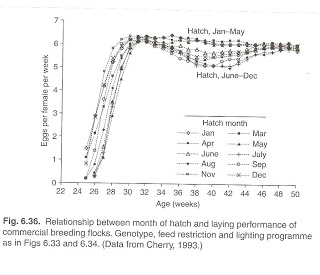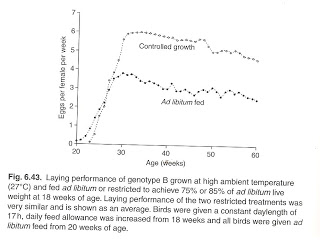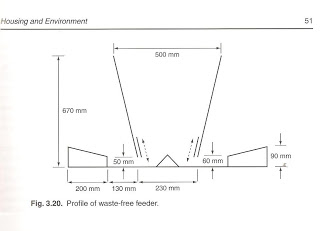Saturday, August 27, 2011
I didn't know about this book until a customer told me about it. I am happy he did as we are
changing some of our management practices because of it. Domestic Duck Production, Science and Practice is a book written for commercial producers. Much of the information concerns raising ducks for meat but the section on breeder management applies whether you have Pekin breeders to produce meat ducklings or Golden 300 Hybrids, White Layers or Khaki Campbells for egg production. Even if you are only a serious hobbyist, there will be information in this book that will make you say “Really?” and you will realize there might be a better way to care for your ducks.

The main change we are making because of this book is our use of light. Historically we have grown our ducks on natural day length and then increased the day length to 17 hours between 20 to 25 weeks of age to bring them into egg production. The authors' recommendation is to maintain the ducks on 17 hours of light their entire life and bring them into production with an increase in quality and quantity of feed when they are sexually mature. “Excellent results have been obtained by maintaining meat strain ducks and drakes on a constant photoperiod of 17 hours from day-old until the end of the breeding cycle. Since this programme is simple and applicable at all latitudes it deserves to be adopted as the standard method for rearing Pekin breeding stock.”

Research supports all the information in this book with some of that research being done by the authors. There is a list of references at the end of each chapter if you want to do further research on a specific topic. There are many graphs showing the results of the research and quite a few formulas showing the effects of different variables on weight, age of maturity, etc.

This graph shows the increased egg production from Pekin breeders that were fed 80% of full feed (Controlled growth) up to 18 weeks versus those that were fed all they wanted (Ad libitum feed) their entire life.
The chapters in Domestic Duck Production, Science and Practice are:
History and Biology of the Domestic Duck
Systems of Production
Housing and Environment
Husbandry of Table Duckling
Nutrition and Factors Affecting Body Composition
Rearing of Parent Stock
Management of Breeding Ducks
Fertility and Hatchability
Genetic Improvement
Systems of Production
Housing and Environment
Husbandry of Table Duckling
Nutrition and Factors Affecting Body Composition
Rearing of Parent Stock
Management of Breeding Ducks
Fertility and Hatchability
Genetic Improvement

This drawing shows the ideal duck feeder to prevent waste. Divide these numbers by
25.4 to get inches.
A few other "Did you know?" items in this book: Prior to egg production, female mallards eat a diet predominantely composed of animal foods to satisfy their demand for protein for egg production. Males, in contrast, subsist mainly on a vegetable diet.
Average weight of a 7 week Pekin in 1928 was 3.6 lbs. In 2011 it was 8.1 lbs.
In Asia, ducks are grown in buildings above lakes stocked with fish. The slotted floors allow the droppings to feed the algae which feed the fish. Up to 2000 ducks can be grown on each 2.5 acres of pond using this method.
There is true value in keeping the bedding thick in cold climates as the composting generates heat which reduces the heating bill and/or feed consumption.
The problem with a specialized book such as this is that there are few potential buyers and they have to charge more for the book. Yes, the price is $109.95 but for those of you earning money from your ducks, this can be paid back quickly with the valuable information in it. If you are a commercial producer, the other book we recommend is Nutrition and Management of Ducks by Dr. William Dean and Dr. Milton Scott, which emphasizes the nutrition of ducks. Both books can be ordered in the book section on our website.
Do you have any waterfowl books that you have found valuable but we do not sell?
A few other "Did you know?" items in this book: Prior to egg production, female mallards eat a diet predominantely composed of animal foods to satisfy their demand for protein for egg production. Males, in contrast, subsist mainly on a vegetable diet.
Average weight of a 7 week Pekin in 1928 was 3.6 lbs. In 2011 it was 8.1 lbs.
In Asia, ducks are grown in buildings above lakes stocked with fish. The slotted floors allow the droppings to feed the algae which feed the fish. Up to 2000 ducks can be grown on each 2.5 acres of pond using this method.
There is true value in keeping the bedding thick in cold climates as the composting generates heat which reduces the heating bill and/or feed consumption.
The problem with a specialized book such as this is that there are few potential buyers and they have to charge more for the book. Yes, the price is $109.95 but for those of you earning money from your ducks, this can be paid back quickly with the valuable information in it. If you are a commercial producer, the other book we recommend is Nutrition and Management of Ducks by Dr. William Dean and Dr. Milton Scott, which emphasizes the nutrition of ducks. Both books can be ordered in the book section on our website.
Do you have any waterfowl books that you have found valuable but we do not sell?